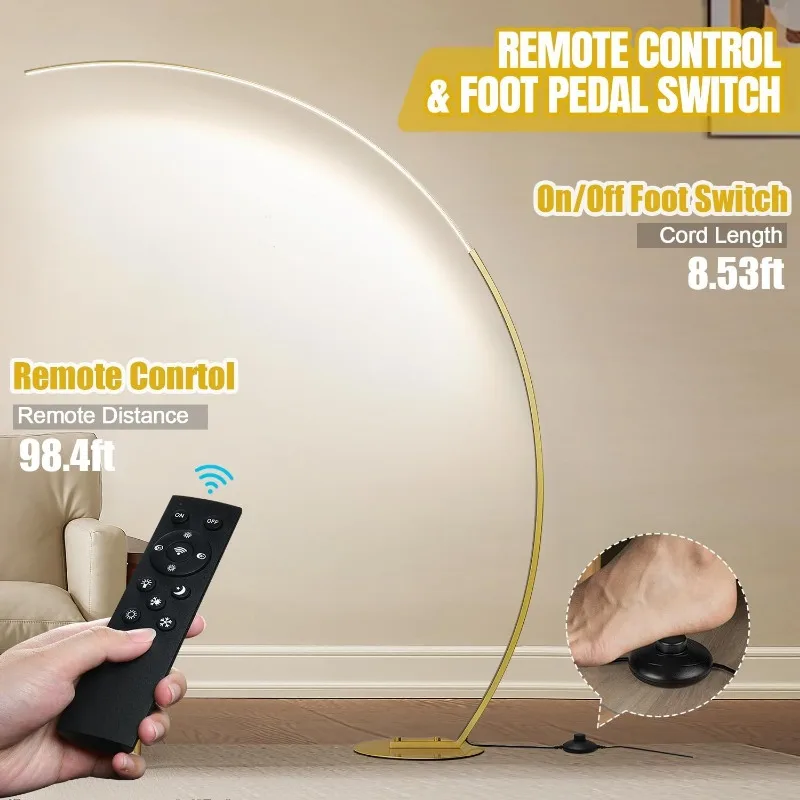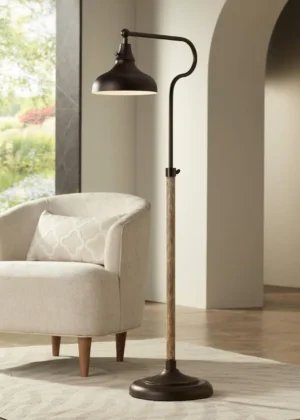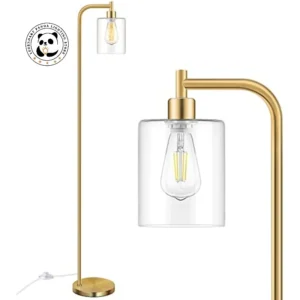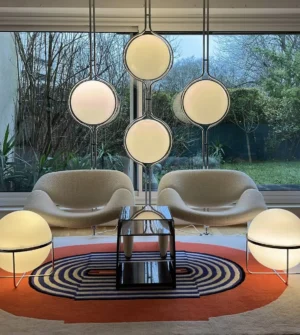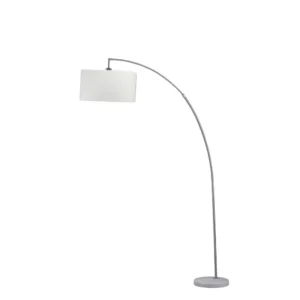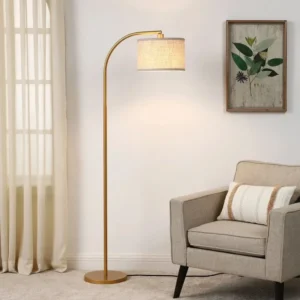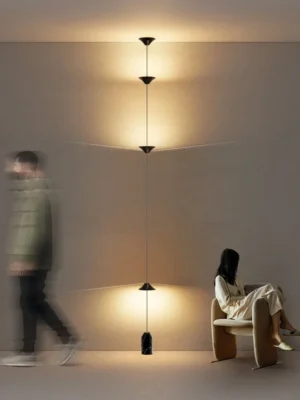What Makes Chrome and Brass Different in Price?
When comparing chrome and brass materials, understanding their fundamental differences is essential for making informed purchasing decisions. Brass is an alloy composed primarily of copper and zinc, creating a distinctive gold-like appearance with its warm yellowish tone. In contrast, chrome isn’t actually a base material but rather a plating process where a thin layer of chromium is applied over another metal (typically steel, zinc, or even brass itself).
Price differences between these materials stem from several factors. Generally speaking, solid brass tends to command a higher price as a raw material than chrome-plated items. However, this simple comparison doesn’t tell the whole story. The manufacturing process, quality standards, intended application, and even market conditions all significantly influence the final cost you’ll pay.
When shopping for home fixtures or decorative items, you’ll notice price variations based on whether something is solid brass versus merely brass-plated, or whether chrome plating is thin and decorative or thick and industrial-grade. These distinctions matter both for initial cost and long-term value.
Throughout this guide, we’ll explore every aspect affecting the price relationship between chrome and brass, from raw materials to manufacturing processes, durability considerations, and practical applications. Understanding these factors will help you determine which material offers the best value for your specific needs, regardless of which carries the higher price tag initially. Making the right choice when choosing perfect arc floor lamp designs often comes down to understanding these material differences.
Understanding Raw Material Costs: The Foundation of Price Differences
The cost difference between chrome and brass begins with their fundamental composition. Brass is an alloy typically consisting of 60-85% copper and 15-40% zinc, with the price fluctuating based on the proportion of these metals. Copper generally costs more than zinc, so brass alloys with higher copper content command premium prices. Market prices for these raw metals directly impact brass manufacturing costs.
Chrome products, on the other hand, start with a base metal (usually steel, zinc, or even brass) that receives a chromium plating through an electroplating process. The cost structure includes:
- The base metal price (steel being less expensive than zinc or brass)
- The cost of chromium used in the plating solution
- The complexity of achieving proper adhesion and finish
Current market factors affecting these materials include:
- Copper prices typically ranging from $3-$4 per pound
- Zinc averaging under $1.50 per pound
- Chromium prices varying widely based on purity requirements
The quality of the base materials significantly impacts final pricing. For instance, architectural-grade brass with precisely controlled copper content costs substantially more than economy brass with higher zinc ratios. Similarly, the thickness and quality of chrome plating varies dramatically between budget and premium applications.
Understanding these raw material fundamentals helps explain why solid brass products generally cost more than comparable chrome-plated items of similar quality and size. However, when comparing different quality tiers, a premium chrome-plated item might cost more than a basic brass one, demonstrating how material quality intersects with overall pricing. This knowledge is particularly helpful when comparing options among brass arc floor lamp collections, where material quality directly affects both price and appearance.
Manufacturing Process Costs: From Raw Material to Finished Product
The manufacturing processes for brass and chrome products differ significantly, creating substantial variations in final product costs. Understanding these processes reveals why seemingly similar products can have dramatically different price points.
For brass products, the manufacturing journey typically involves:
- Alloying copper and zinc at precise temperatures and ratios
- Casting the molten brass into ingots, sheets, or directly into molds
- Machining, cutting, and forming the brass into desired shapes
- Polishing to achieve the desired finish
- Applying protective coatings (often lacquer) to prevent tarnishing
Chrome products follow a different path:
- Fabricating the base material (steel, zinc, or brass) into the desired shape
- Extensive surface preparation through cleaning, polishing, and acid treatments
- Multiple plating steps, often starting with copper or nickel undercoats
- Chromium electroplating in specialized chemical baths
- Final polishing and quality inspection
The labor intensity differs considerably between these processes. While brass fabrication requires skilled metalworking, chrome plating demands precise chemical process control. Both materials require significant energy input, but chrome’s electroplating process is particularly energy-intensive, contributing to its manufacturing costs.
Scale of production also impacts pricing—mass-produced items benefit from economies of scale that custom pieces cannot match. Environmental compliance costs have grown increasingly significant, as both brass production and chrome plating face strict regulations regarding waste disposal and emissions control.
The specialized equipment required for quality chrome plating is particularly expensive, including temperature-controlled tanks, precise electrical current regulation, and extensive ventilation systems. Meanwhile, brass fabrication requires foundry equipment, specialized cutting tools, and polishing machinery.
These manufacturing complexities help explain why quality can vary so dramatically between basic and premium options in both chrome arc floor lamp designs and brass alternatives, with the production process often accounting for 40-60% of the total product cost beyond raw materials alone.
Quality Tiers: How Manufacturing Standards Affect Price
The price difference between chrome and brass products becomes particularly evident when comparing quality tiers. Both materials are available in various grades that significantly impact price points, durability, and appearance.
For brass products, quality tiers typically include:
| Quality Tier | Characteristics | Price Premium | Common Uses |
|---|---|---|---|
| Architectural Grade | High copper content (65-85%), precise manufacturing, consistent color | 70-100% above standard | High-end fixtures, custom hardware, heritage restorations |
| Standard Commercial | Balanced copper-zinc ratio, good finishing, protective coating | Baseline pricing | Quality bathroom fixtures, door hardware, decorative elements |
| Economy Grade | Higher zinc content, thinner material, basic finishing | 30-50% below standard | Budget fixtures, decorative-only applications, temporary installations |
Chrome products follow a similar tiered structure:
| Quality Tier | Characteristics | Price Premium | Common Uses |
|---|---|---|---|
| Heavy Industrial | Thick chromium layer (25+ microns), multiple base layers | 80-120% above standard | Commercial applications, heavy-use environments, exterior hardware |
| Standard Decorative | Medium chromium thickness (10-15 microns), good base preparation | Baseline pricing | Home fixtures, quality furniture components, durable consumer goods |
| Economy Plating | Minimal chromium (5-8 microns), basic preparation | 40-60% below standard | Budget fixtures, temporary applications, low-wear environments |
The quality differences manifest physically in several ways. Higher quality brass has greater weight, more consistent color, and precise dimensions. Premium chrome exhibits perfect reflectivity, no visible plating flaws, and exceptional smoothness.
Manufacturing precision directly impacts cost—tighter tolerances require more time, skilled labor, and quality control steps. Even within the same material category, these quality differences can create larger price variations than the choice between chrome and brass itself.
When examining products, you can identify higher quality by checking weight (heavier usually means thicker material), examining finish consistency, and testing the smoothness of joints or edges. The brass chrome arc lamp comparison demonstrates these quality variations in practical application, showing how manufacturing standards directly influence both appearance and longevity.
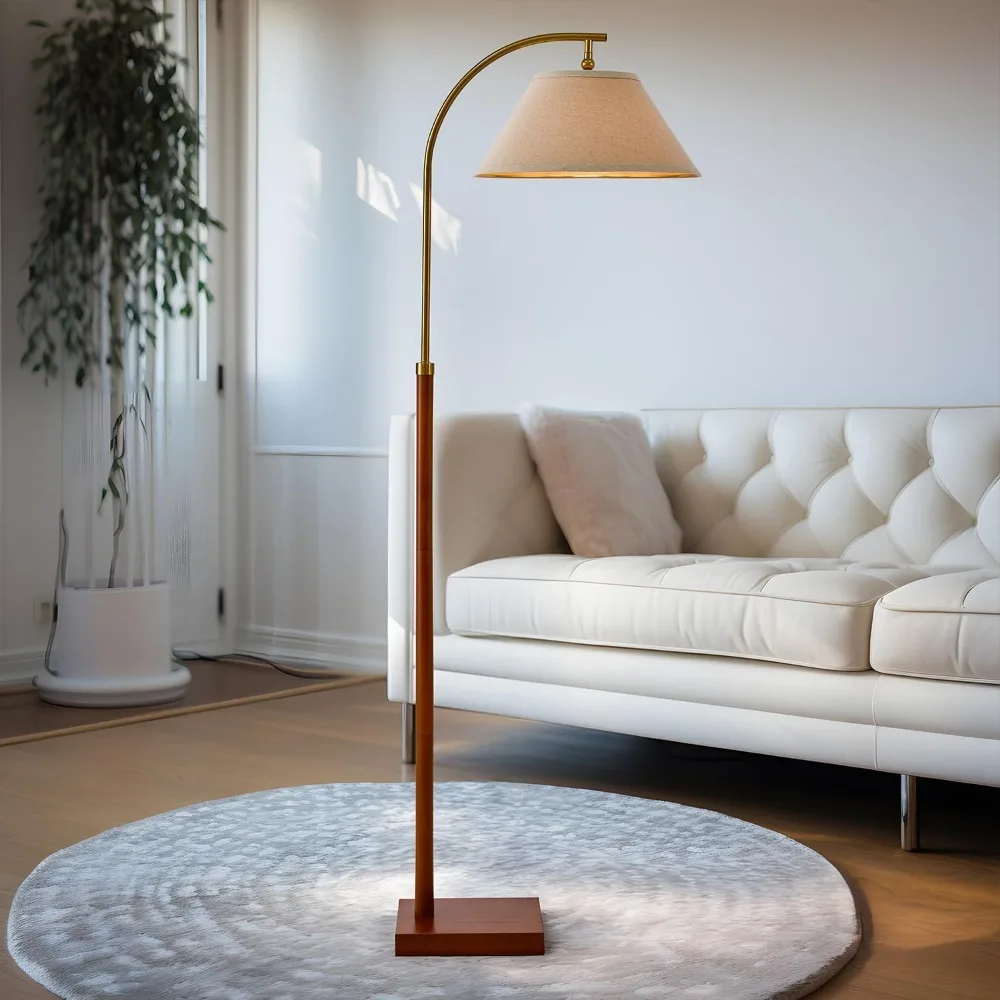
Application Matters: How Usage Affects Material Selection and Cost
The intended application of chrome or brass significantly influences which material offers better value, regardless of initial price differences. Each material excels in specific environments and applications, making the “more expensive” option sometimes the more economical long-term choice.
Brass typically performs exceptionally well in:
* Maritime and coastal environments due to excellent saltwater corrosion resistance
* Historical restoration projects requiring period-appropriate materials
* Applications requiring antimicrobial properties (brass naturally inhibits bacterial growth)
* Situations where a warm, developing patina is aesthetically desirable
* Water-contact applications like plumbing valves and fittings
Chrome offers superior performance in:
* High-moisture bathroom environments requiring easy cleaning
* Modern, minimalist design schemes requiring reflective surfaces
* Applications where a consistent appearance is required over time
* Situations with frequent handling where fingerprints would be problematic
* Budget-conscious projects requiring immediate visual impact
Environmental exposure becomes a critical cost consideration. In coastal homes, brass hardware might cost more initially but could outlast chrome alternatives by many years. Conversely, in a sleek modern bathroom, chrome fixtures might maintain their intended appearance longer than brass, which naturally darkens over time without regular maintenance.
Industry standards sometimes dictate material choice regardless of cost considerations. For example, certain plumbing codes specify brass for specific components, while some contemporary design certifications favor chrome for its lower environmental impact during manufacturing.
Understanding these application-specific factors helps determine whether the premium price of brass over chrome (or vice versa for high-quality chrome plating) represents genuine value. Even among gold arc floor lamp options and other premium materials, application requirements should guide selection beyond simple price comparisons.
Complete Comparison: Chrome vs. Brass Cost and Value Factors
When evaluating the true cost difference between chrome and brass, multiple factors beyond initial purchase price must be considered. This comprehensive comparison examines all aspects affecting the total value proposition of each material.
| Factor | Chrome | Brass |
|---|---|---|
| Initial Material Cost | Lower (base metal + thin plating) | Higher (solid copper-zinc alloy) |
| Manufacturing Complexity | High (multi-stage plating process) | Medium (alloying, casting, machining) |
| Durability in Normal Conditions | Good (8-15 years typical) | Excellent (20+ years typical) |
| Corrosion Resistance | Excellent initially, diminishes if plating damaged | Naturally increases as patina develops |
| Maintenance Requirements | Low (simple cleaning, no polishing) | Moderate to High (regular polishing if bright finish desired) |
| Appearance Stability | Maintains original look with proper care | Naturally darkens/patinas over time |
| Repair Possibility | Limited (damaged plating difficult to repair) | Good (can be refinished, polished, or recoated) |
| Sustainability | Lower (energy-intensive plating process) | Higher (fully recyclable material) |
| End-of-Life Value | Minimal (scrap value of base metal only) | Good (recyclable for copper content) |
Price ranges for common household items reflect these differences:
- Bathroom faucets: Chrome ($60-200), Brass ($100-500+)
- Cabinet hardware (per piece): Chrome ($2-15), Brass ($5-30+)
- Door handles: Chrome ($20-100), Brass ($40-250+)
The price gap widens for larger items and narrows for mass-produced small accessories. However, price variations within each material category (based on quality tier) can exceed the average difference between materials.
Long-term value often favors brass for items expected to last decades, particularly in challenging environments. Chrome typically offers better immediate value for trendy items that might be replaced before durability becomes a concern.
Environmental considerations increasingly affect value calculations. While brass has higher embodied energy in production, its recyclability and longer lifespan often make it the more sustainable choice despite higher initial cost. This balanced understanding of cost factors forms the foundation of the chrome versus brass comparison beyond simple price points.
Initial Investment: Upfront Cost Analysis
When comparing the upfront costs of chrome versus brass products, consistent patterns emerge across various categories. Chrome generally offers a lower initial price point, though this advantage narrows at premium quality levels.
Typical price differences for common household items include:
- Entry-level bathroom sink faucet: Chrome ($60-100), Brass ($120-200)
- Premium designer bathroom faucet: Chrome ($150-300), Brass ($250-600+)
- Basic cabinet knobs (per piece): Chrome ($2-5), Brass ($4-12)
- Premium cabinet handles (per piece): Chrome ($8-20), Brass ($15-40+)
- Standard door handles: Chrome ($25-60), Brass ($50-120)
- Designer door hardware: Chrome ($80-200), Brass ($150-400+)
These price differences stem from several factors affecting initial cost:
- Raw material expense (brass material costs 2-3× more than typical chrome base metals)
- Manufacturing complexity (solid brass requires more material processing)
- Retail markup differences (brass often positioned as premium product category)
- Design complexity (intricate designs cost more to execute in solid brass)
- Installation requirements (generally similar between materials)
Importantly, design complexity affects brass pricing more dramatically than chrome. Simple brass items might carry a 30-50% premium over chrome equivalents, while intricately designed brass pieces may cost 2-3 times more than their chrome counterparts due to additional material and machining requirements.
Retailers typically apply higher percentage markups to brass products, positioning them as premium offerings. This marketing approach further widens the perceived price gap between materials.
When working within budget constraints, understanding what look arc floor lamp designs and other fixtures offer in different materials helps determine whether the chrome savings justify any potential trade-offs in appearance or longevity. For many decorative applications where items receive minimal handling or stress, chrome’s lower initial cost represents genuine value.
Adjustable Arc Floor Lamp, Bronze Arc Floor Lamp
Price range: $440.95 through $558.52 Select options This product has multiple variants. The options may be chosen on the product pageBrass Arc Floor Lamp, Contemporary Arc Floor Lamp, LED Arc Floor Lamp
Price range: $490.72 through $522.04 Select options This product has multiple variants. The options may be chosen on the product pageChrome Arc Floor Lamp, LED Arc Floor Lamp
Price range: $304.95 through $1,210.40 Select options This product has multiple variants. The options may be chosen on the product pageContemporary Arc Floor Lamp, Silver Arc Floor Lamp
$459.99 Select options This product has multiple variants. The options may be chosen on the product pageContemporary Arc Floor Lamp, Gold Arc Floor Lamp
$196.24 Select options This product has multiple variants. The options may be chosen on the product pageBlack Arc Floor Lamp, Contemporary Arc Floor Lamp
Price range: $277.34 through $458.46 Select options This product has multiple variants. The options may be chosen on the product page
Long-Term Value: The True Cost of Ownership
While chrome typically offers lower initial costs, calculating the true expense over a product’s lifetime often reveals a different value proposition. When evaluating long-term ownership costs, several factors shift the equation significantly.
Consider this hypothetical 20-year cost comparison for bathroom fixtures:
Chrome Bathroom Faucet:
* Initial purchase: $80-120
* Special cleaners (lifetime): $50-100
* Replacement due to finish failure (once): $80-120
* Installation of replacement: $100-200
* Total 20-year cost: $310-540
Brass Bathroom Faucet:
* Initial purchase: $150-250
* Polishing supplies (lifetime): $30-80
* Occasional resealing: $20-40
* No replacement needed
* Total 20-year cost: $200-370
This example demonstrates how brass can actually prove less expensive over time despite higher initial costs. The calculations change based on:
- Product quality tier (higher-quality chrome lasts longer)
- Usage environment (humid environments accelerate chrome deterioration)
- Maintenance diligence (proper care extends lifespan of both materials)
- Labor costs for replacement (professional installation multiplies the impact of durability differences)
Brass develops a natural patina that many consider appealing, while damaged chrome requires complete replacement to restore appearance. Additionally, brass items often retain significant resale or scrap value at end-of-life due to their copper content, while chrome-plated items typically have minimal residual value once the finish deteriorates.
The long-term value calculation favors brass most strongly for:
* Frequently used items (door handles, faucets)
* Applications in challenging environments (coastal areas, outdoor exposure)
* Heritage properties where period-appropriate materials add resale value
* Items where replacement would require significant labor costs
The metal finish arc floor lamps category demonstrates this value principle—premium materials often deliver superior lifetime value despite higher initial investment when properly maintained.
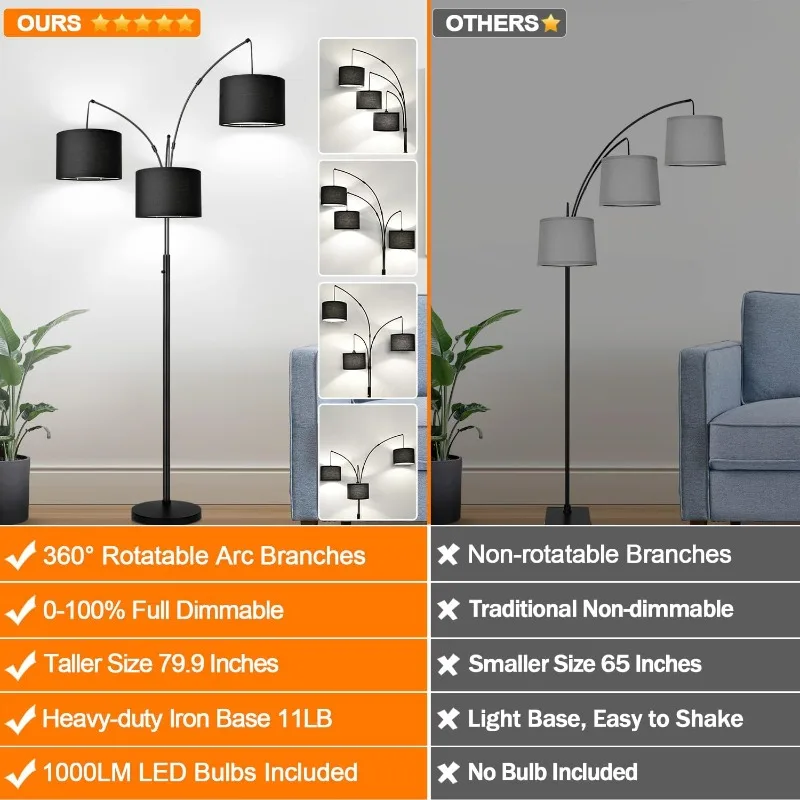
Durability Face-Off: Lifespan and Performance Analysis
The durability differences between chrome and brass directly impact their cost-effectiveness over time. Each material responds differently to various stressors, affecting their practical lifespan in specific applications.
Chrome’s durability profile includes:
* Excellent scratch resistance when properly plated
* High resistance to tarnishing (maintains shine with minimal care)
* Vulnerable to chipping if the base metal is dented
* Poor recovery from damage (once compromised, deterioration accelerates)
* Typically lasts 5-15 years depending on quality and conditions
* Vulnerable to harsh cleaning chemicals that can damage the plating
Brass demonstrates different durability characteristics:
* Moderate scratch resistance (scratches are less visible and can be polished out)
* Naturally tarnishes over time, forming a protective patina
* Resistant to chipping (solid material throughout)
* Excellent repair potential through polishing or refinishing
* Typical lifespan of 20+ years with basic maintenance
* Highly resistant to corrosion in most environments
Environmental conditions dramatically affect these durability differences. Chrome performs well in controlled indoor environments but can deteriorate rapidly in coastal areas or industrial settings with chemical exposure. Brass often thrives in these challenging environments, with its natural patina actually enhancing corrosion resistance over time.
The structural integrity comparison also favors brass, particularly for load-bearing applications. Solid brass hardware maintains consistent strength throughout its life, while chrome’s durability depends entirely on the strength of its base metal and the integrity of the plating bond.
Understanding these performance differences helps determine whether arc floor lamps are good investments in specific materials for different environments. For heavily used items in demanding conditions, brass’s superior durability often justifies its higher initial cost through extended service life and fewer replacements.
Maintenance Requirements: Keeping Each Material Looking Its Best
The ongoing maintenance needs for chrome and brass differ significantly, affecting both the total cost of ownership and the practical experience of living with each material.
Chrome maintenance is generally straightforward:
* Regular cleaning with mild soap and water
* Drying after cleaning to prevent water spots
* Avoiding abrasive cleaners that can scratch the surface
* Periodic application of specialized chrome polish (optional)
* No required maintenance to prevent corrosion in normal environments
Brass care is more involved, particularly if maintaining a polished appearance:
* Regular cleaning with mild soap and water
* Periodic polishing (every 3-12 months) to maintain shine
* Application of protective lacquer or wax to slow tarnishing
* More frequent attention in humid environments
* Option to allow natural patina development (reducing maintenance)
The time investment difference is substantial—chrome typically requires just a few minutes of cleaning weekly, while maintaining polished brass can demand 15-30 minutes per item several times yearly. This maintenance gap narrows considerably if you allow brass to develop its natural patina.
Cleaning product requirements also differ. Chrome responds well to general household cleaners, while brass often requires specialized metal polishes containing mild abrasives and tarnish-removing chemicals, typically costing $8-15 per bottle.
The consequence of neglected maintenance varies dramatically between materials. Neglected chrome might develop water spots or light surface rust at connection points but generally maintains its appearance. Untended brass gradually darkens and eventually develops a greenish-brown patina—a process some owners intentionally encourage for an antique appearance.
These maintenance differences become particularly important when considering alternatives like bronze arc floor lamp options, which have their own distinct care requirements that fall between those of chrome and brass.
Aesthetic Appeal: Design Versatility and Visual Impact
Beyond cost considerations, the aesthetic differences between chrome and brass significantly influence material selection. Each material creates a distinctly different visual impact in interior spaces.
Chrome’s visual characteristics include:
* High reflectivity creating a mirror-like finish
* Cool, bluish undertones that complement modern spaces
* Ability to visually expand and brighten small spaces
* Clean, contemporary appearance that resists dating
* Neutral compatibility with most color palettes
Brass offers contrasting aesthetic qualities:
* Warm golden tones that add richness to spaces
* Subtle reflectivity that glows rather than mirrors
* Natural aging process that develops character over time
* Traditional associations that complement heritage designs
* Ability to add warmth to cool color schemes
These materials pair differently with various design styles. Chrome naturally enhances:
* Minimalist and contemporary designs
* Industrial and urban aesthetics
* Scandinavian-inspired spaces
* Modern and mid-century modern interiors
* Clinical or laboratory-inspired designs
Brass complements:
* Traditional and classic interior designs
* Vintage and antique-inspired spaces
* Art deco and Victorian aesthetics
* Warm, rich color palettes
* Natural material schemes featuring wood and leather
The visual aging process differs dramatically. Chrome is designed to maintain its original appearance indefinitely, though it tends to fail suddenly if damaged. Brass evolves gradually, developing a living finish that many designers and homeowners specifically seek for its character and depth.
These aesthetic considerations often override pure cost concerns, making material selection highly personal. The perfect arc floor lamp guide explores how these aesthetic qualities influence lighting choices beyond simple price comparisons, helping match materials to your overall design vision.
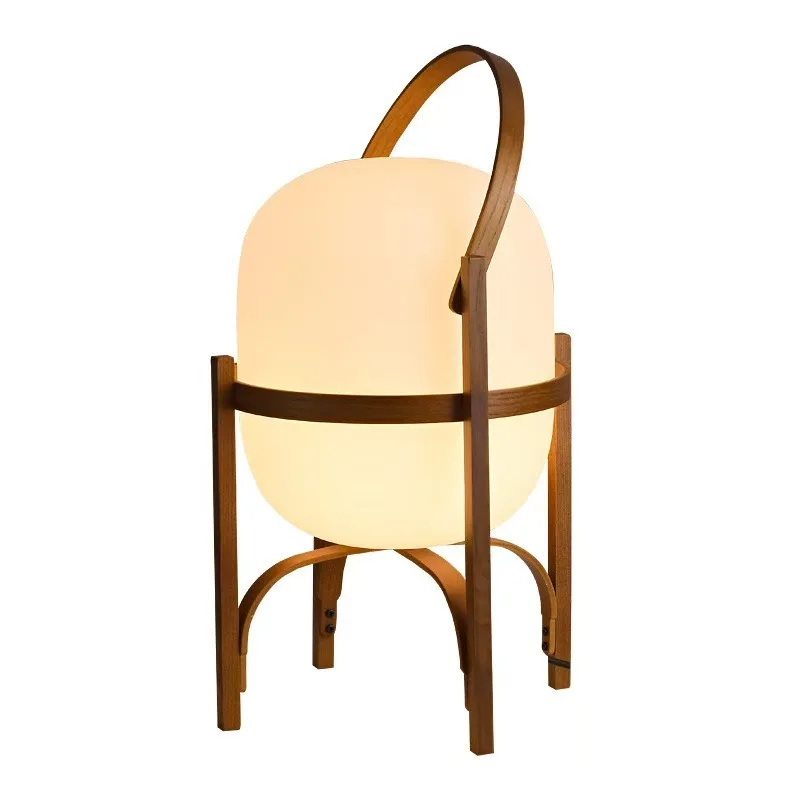
Special Applications: When One Material Clearly Outperforms the Other
While cost comparisons matter for general purposes, certain applications strongly favor either chrome or brass regardless of price differences. Understanding these specialized uses helps determine when paying more for a specific material represents necessary value rather than optional luxury.
Applications where brass clearly outperforms:
- Marine environments: Brass’s exceptional resistance to saltwater corrosion makes it virtually mandatory for boat hardware and coastal home fixtures, lasting 5-10 times longer than chrome in these settings
- Historical restorations: Authentic period details often require brass for architectural accuracy in heritage properties
- Antimicrobial requirements: Brass surfaces naturally inhibit bacterial growth, making them preferred for high-touch areas in healthcare or food service
- Extreme temperature fluctuations: Brass maintains structural integrity through temperature changes that can cause chrome plating to separate from its base metal
- Chemical exposure areas: Many industrial chemicals that would damage chrome have minimal effect on brass
Scenarios where chrome proves superior:
- High-humidity bathrooms: Chrome’s non-porous surface resists water spotting and requires minimal maintenance in daily shower environments
- Contemporary design schemes: The reflective quality and cool tones of chrome create visual effects impossible to achieve with brass
- Budget-constrained projects requiring immediate visual impact: Chrome delivers maximum shine for minimum investment
- Frequently cleaned commercial settings: Chrome withstands repeated cleaning with commercial products better than uncoated brass
- Applications where consistent appearance is essential: Chrome maintains its original look while brass naturally changes over time
Industry standards sometimes mandate specific materials—many building codes require brass for gas fittings due to its safety profile, while certain healthcare environments specify chrome for ease of sanitation.
When evaluating specialized applications like selecting a brass vs chrome arc lamp, these performance factors often supersede general cost considerations, making the “more expensive” material the only practical choice for specific environments.
Making Your Decision: When to Choose Chrome or Brass Despite Cost Differences
After weighing all the factors, making the right material choice comes down to balancing your specific priorities. This decision framework helps determine whether chrome or brass offers better value for your particular needs, regardless of initial price differences.
Consider choosing chrome when:
* Your budget is the primary constraint
* The application is temporary or likely to be updated within 5-10 years
* The modern, reflective aesthetic aligns with your design vision
* The item will be in a controlled indoor environment
* Low maintenance is a high priority
* The application doesn’t involve saltwater exposure or extreme conditions
Opt for brass when:
* Long-term value outweighs initial cost concerns
* You’re looking for an investment piece expected to last decades
* The warm, traditional aesthetic appeals to your design sensibility
* The item will face challenging environmental conditions
* You appreciate materials that develop character over time
* Historical authenticity or material quality is important
For mixed material approaches:
* Use brass for high-touch, high-wear items (door handles, faucets)
* Choose chrome for decorative accents and less-handled items
* Consider brass for exterior applications and chrome for interiors
* Invest in brass for architectural permanence, chrome for fashionable accents
Budget allocation strategies might include investing in brass for statement pieces while using chrome for secondary elements. Similarly, focusing on brass for heavily used items while selecting chrome for rarely touched decorative elements often maximizes value.
This balanced approach recognizes that neither material is universally “better”—the right choice depends entirely on specific circumstances and priorities. The complete arc floor lamp guide applies these principles to lighting specifically, showing how material selection fits within broader decision frameworks for home furnishings.
Frequently Asked Questions About Chrome and Brass Costs
Is solid brass worth the extra cost over chrome?
For items expected to last decades, particularly in demanding environments or frequently used applications, solid brass typically justifies its higher price through superior longevity and repair potential. For decorative or rarely used items in controlled environments, chrome often provides better immediate value.
How can I tell if something is solid brass versus brass-plated?
Solid brass is non-magnetic, has consistent color when scratched, feels heavier than similar-sized items, and produces a duller sound when tapped (compared to the bright “ping” of plated items). Look for “solid brass” labeling, as items described merely as “brass” or “brass finish” are typically plated.
Does chrome plating thickness affect price and durability?
Yes, significantly. Decorative chrome (5-8 microns) costs less but wears through more quickly than heavy chrome plating (25+ microns). Premium fixtures use multiple layers including copper and nickel beneath the chrome for maximum durability, increasing manufacturing costs substantially.
Which material is more cost-effective for bathroom fixtures?
For master bathrooms and frequently used spaces, brass often proves more cost-effective long-term despite higher initial prices, particularly in areas with hard water. For guest bathrooms or rental properties where fixtures might be updated for style before wearing out, chrome typically offers better value.
Can chrome be applied over brass, and how does this affect cost?
Yes, brass can be chrome-plated (creating “chromium-plated brass”), combining brass’s structural benefits with chrome’s appearance. This process costs more than standard chrome plating over steel or zinc but less than solid brass with traditional finishes. The result offers good durability but eliminates brass’s natural antimicrobial properties.
How do I balance budget constraints with quality requirements?
Focus on investing in quality for items with mechanical components (faucets, hinges) where failure is problematic, while economizing on purely decorative elements. Also consider mixing materials—quality chrome often outperforms low-grade brass, making mid-tier chrome potentially better than entry-level brass despite the material difference.
Smart Shopping: Getting the Best Value Regardless of Material
Finding the best value in chrome and brass products requires looking beyond simple price comparisons. These strategies help ensure quality regardless of which material you choose:
Identifying quality markers in both materials:
- Weight is a reliable indicator—heavier items typically contain more material and better construction
- Examine joint quality and seams for precision fitting
- Check the finish for consistency and depth of reflection
- Test the movement of any mechanical parts for smoothness
- Inspect plating edges and internal surfaces for complete coverage
- Research manufacturer reputation for specific product categories
Effective budget allocation:
- Invest in higher quality for items with moving parts that are prone to failure
- Economize on purely decorative elements where function isn’t critical
- Consider mid-tier products from reputable manufacturers over premium products from unknown brands
- Balance material choices—quality chrome often outperforms budget brass
When reading product specifications:
- Look for specific material descriptions (e.g., “solid brass” vs. vague terms like “brass finish”)
- Note chrome plating thickness when provided (higher micron counts indicate better durability)
- Check for base metal information on plated products
- Verify warranty terms, which often reflect manufacturer confidence in durability
Questions to ask retailers:
- “Is this solid brass throughout or brass-plated?”
- “What is the base metal beneath the chrome plating?”
- “What is the expected lifespan under normal use?”
- “Are replacement parts available if needed?”
- “What specific care requirements will maintain the warranty?”
By focusing on quality indicators rather than simply comparing chrome to brass, you can often find excellent value in either material. The best approach is evaluating each product on its individual merits rather than making broad material assumptions. This careful assessment ensures you get the best value for your specific needs, regardless of which material you ultimately select.

